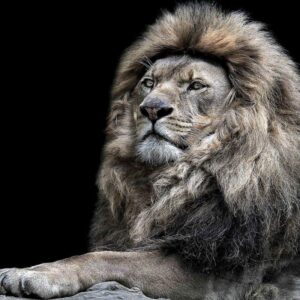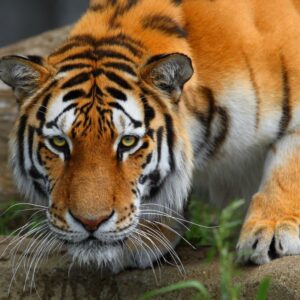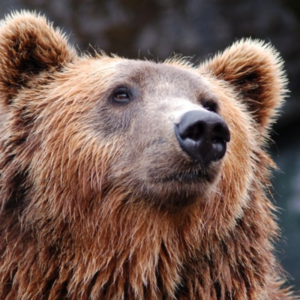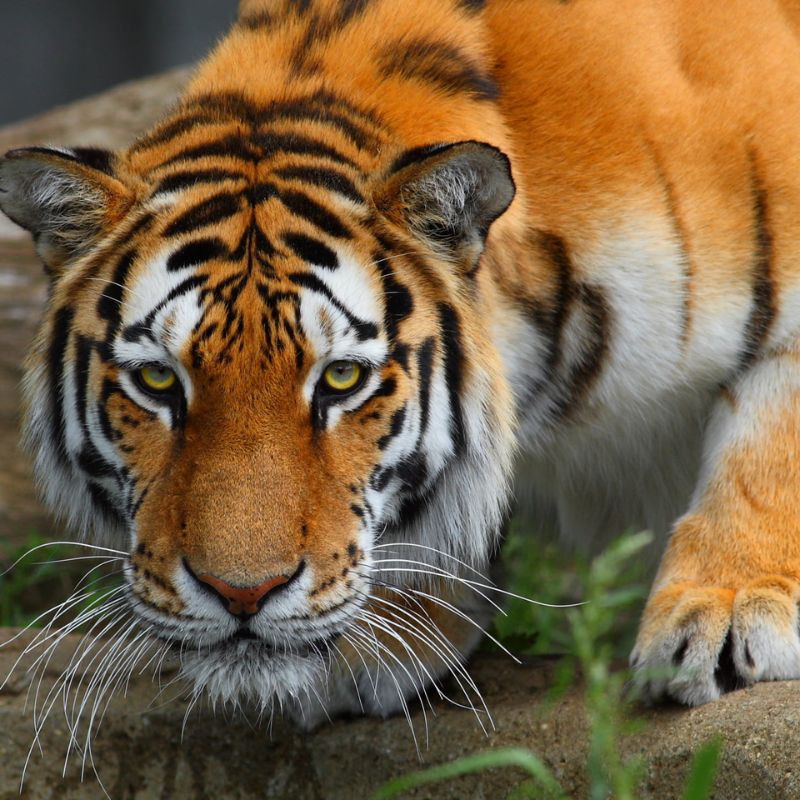Animals
The World of Wild Roars
The untamed wilderness echoes with the sounds of wild roars, a reminder of the majestic predators that roam the earth. These apex predators, from lions to wolves, play a crucial role in maintaining the delicate balance of nature. This article will delve into the fascinating world of these creatures, exploring their habits, their importance to the ecosystem, and the challenges they face in a rapidly changing world.
The Wild Roars of Majestic Big Cats
Lions: The Kings of the Jungle
Lions, often referred to as the kings of the jungle, are among the most iconic predators in the animal kingdom. With their powerful build, majestic manes, and a roar that can be heard from miles away, lions have captured the human imagination for centuries. These social animals live in groups known as prides, which consist of several females, their offspring, and a few adult males.
The social structure of a pride is highly organized, with females usually taking on the role of hunting, while males protect the pride’s territory. Lions primarily hunt large herbivores like zebras and wildebeests, using teamwork to stalk and ambush their prey. However, the lion population is declining due to habitat loss, human-wildlife conflict, and poaching. Conservation efforts, including protected reserves and anti-poaching initiatives, are crucial to ensuring the survival of this majestic species.

Tigers: The Silent Stalkers
Tigers, the largest of the big cats, are solitary hunters that rely on stealth and strength to capture their prey. Unlike lions, tigers are not social animals, preferring to hunt and live alone except during mating season. There are several subspecies of tigers, including the Bengal tiger, Siberian tiger, and Sumatran tiger, each adapted to its unique environment.
Tigers are known for their powerful build, sharp claws, and keen senses. They primarily hunt large ungulates such as deer and wild boar, often stalking their prey for hours before striking. In many cultures, tigers are revered as symbols of power and courage, yet they face significant threats from habitat destruction and illegal poaching. Conservation programs focusing on habitat preservation and anti-poaching measures are vital for the survival of these magnificent creatures.

Wild Roars of Other Apex Predators
Wolves: The Pack Hunters
Wolves are highly social animals known for their complex pack structures. A pack is typically led by an alpha male and female, with the rest of the members consisting of their offspring and other relatives. Wolves are skilled hunters, often working together to bring down prey much larger than themselves, such as elk and moose.
Communication within a wolf pack is sophisticated, involving a range of vocalizations, body language, and scent marking. Howling is a key part of this communication, used to rally the pack, mark territory, or signal a successful hunt. Wolves have historically been seen as threats to livestock, leading to widespread persecution. However, recent reintroduction efforts, such as those in Yellowstone National Park, have shown the important role wolves play in maintaining healthy ecosystems.
Bears: The Powerful Giants
Bears are among the largest land predators, with species such as the grizzly bear, polar bear, and black bear inhabiting various regions across the globe. Unlike wolves and lions, bears are omnivores, with a diet ranging from berries and plants to fish and small mammals. Despite their size and strength, most bear species are not aggressive unless threatened or protecting their young.
Bears are known for their intelligence, curiosity, and remarkable memory. They hibernate during the winter months, surviving on the fat reserves they build up during the warmer seasons. Human activities, such as deforestation and climate change, pose significant threats to bear populations. Conservation efforts aimed at preserving their habitats and minimizing human-bear conflicts are essential to ensuring their survival.

The Importance of Predators in Ecosystems
Predator-Prey Dynamics
Apex predators like lions, tigers, wolves, and bears play a vital role in maintaining the health of ecosystems. They regulate prey populations, preventing overgrazing and ensuring that plant life can thrive. For instance, the reintroduction of wolves to Yellowstone National Park has led to a significant reduction in deer populations, allowing vegetation to recover and supporting the return of other wildlife species.
The absence of apex predators can lead to imbalances that negatively impact entire ecosystems. Without predators, prey populations can explode, leading to overgrazing and habitat degradation. This in turn affects other species and can lead to a collapse in biodiversity. Understanding the importance of predators is crucial for effective wildlife management and conservation.
The Impact of Human Activities
Human activities pose the greatest threat to predator populations. Deforestation, urbanization, and agricultural expansion result in habitat loss, forcing predators into smaller and more fragmented areas. This not only reduces their chances of survival but also increases the likelihood of human-wildlife conflict.
Poaching is another major threat, driven by illegal wildlife trade and the demand for animal parts, such as tiger bones and lion pelts. Conservation efforts must address these challenges through stronger legal protections, anti-poaching measures, and community engagement. Protecting wildlife corridors and establishing more protected areas are also essential for the long-term survival of these species.
The Future of Wild Roars
Conservation Success Stories
Despite the challenges, there have been notable conservation successes. The reintroduction of wolves to Yellowstone is a prime example, demonstrating how restoring apex predators can revitalize entire ecosystems. Similarly, efforts to protect tigers in India through the creation of tiger reserves have led to a gradual increase in their population.
Anti-poaching technologies, such as drones and camera traps, have also proven effective in protecting endangered species. Community-based conservation programs that involve local people in wildlife protection efforts have shown that coexistence between humans and predators is possible.
The Role of Education and Awareness
Education and awareness are key to changing attitudes towards predators. Wildlife tourism, when managed responsibly, can provide vital funding for conservation efforts while raising awareness about the importance of protecting these animals. Documentaries and media coverage also play a crucial role in highlighting the plight of predators and inspiring action.
Individuals can contribute to conservation efforts by supporting organizations that protect wildlife, advocating for stronger environmental policies, and making sustainable choices in their daily lives. The future of wild roars depends on our collective efforts to preserve the natural world and the incredible creatures that inhabit it.
Conclusion
The world of wild roars is a powerful reminder of nature’s beauty, strength, and complexity. Apex predators like lions, tigers, wolves, and bears are not just fearsome hunters; they are vital to the health of our planet’s ecosystems. Protecting them requires a multifaceted approach that includes conservation, education, and sustainable practices. By working together, we can ensure that the roars of these magnificent creatures continue to echo across the wild landscapes they call home.
Learn more: zgladnews


